Media type: Children’s book

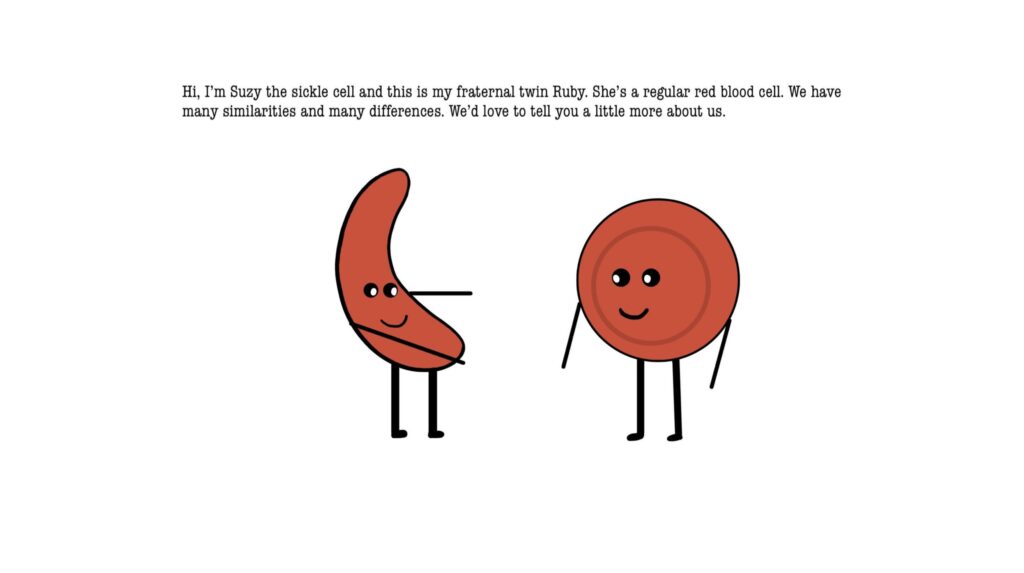
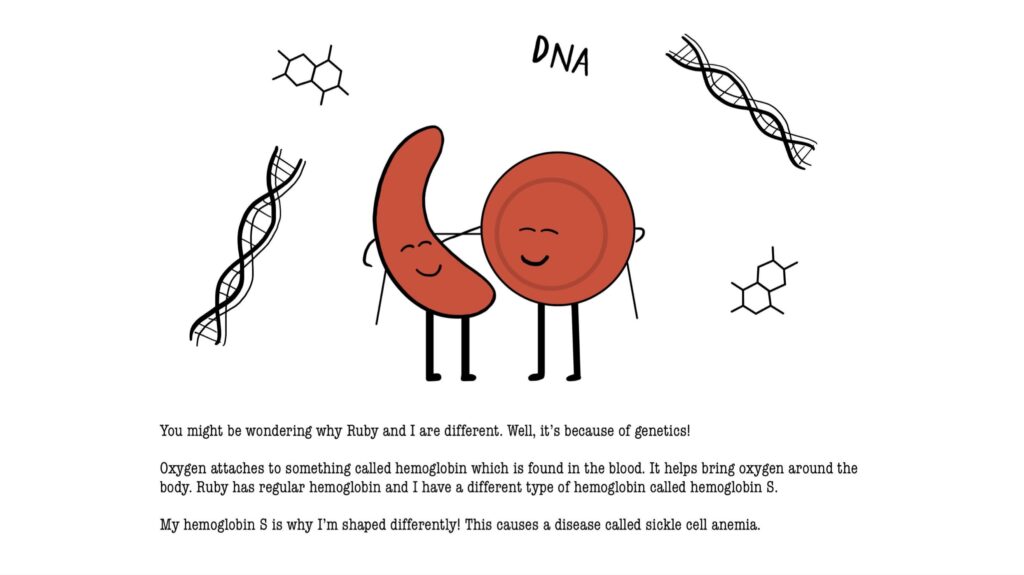
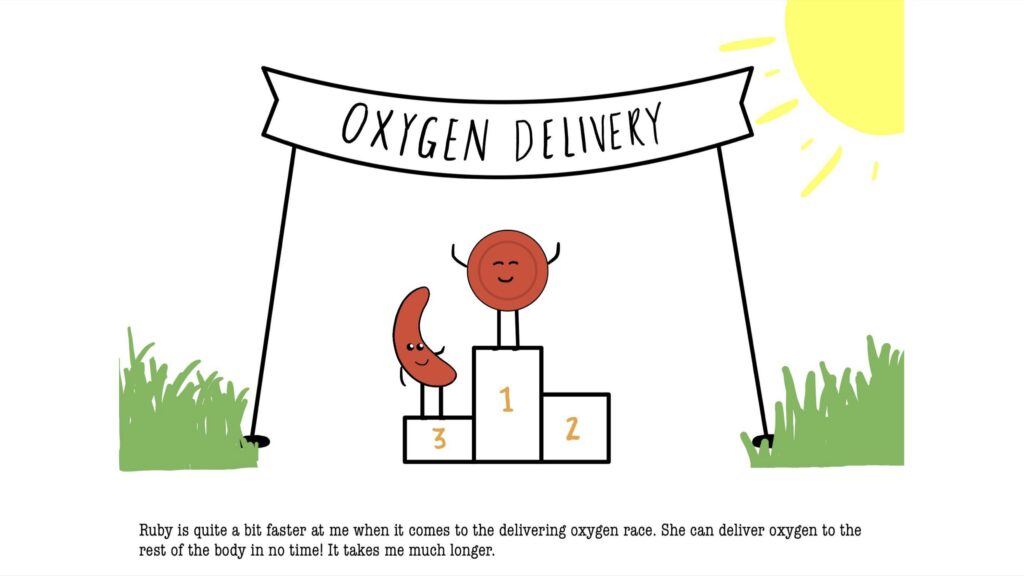
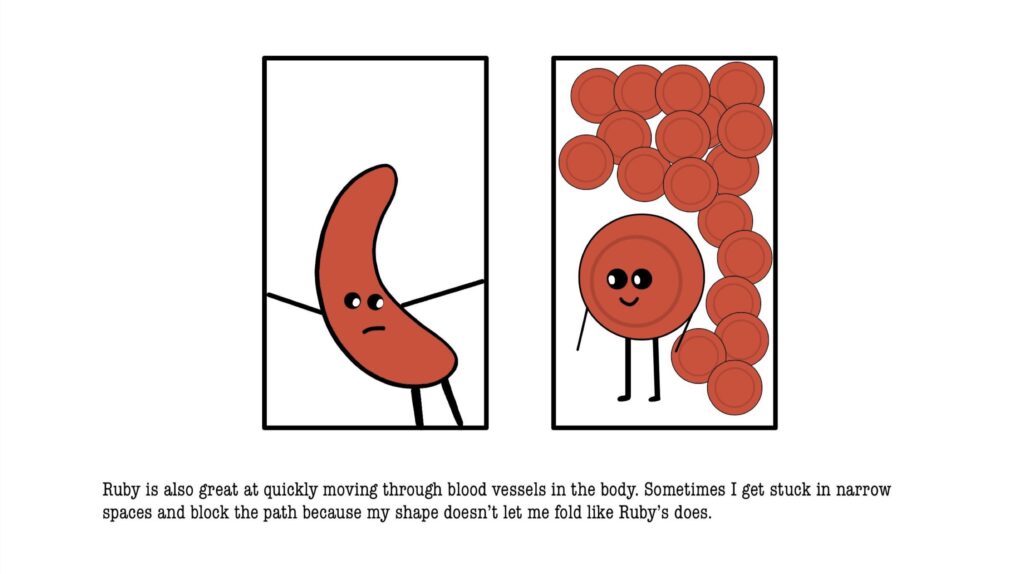

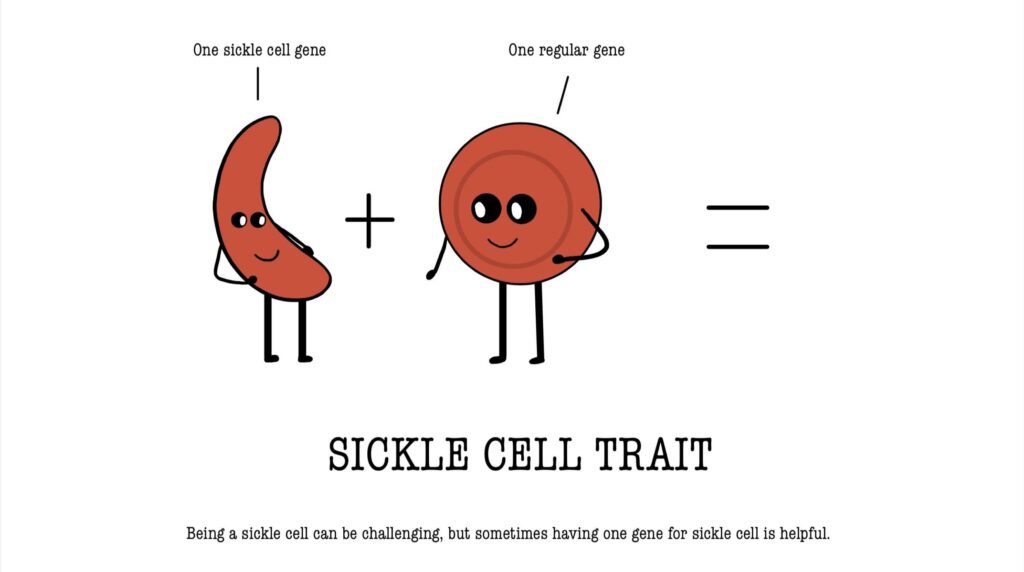
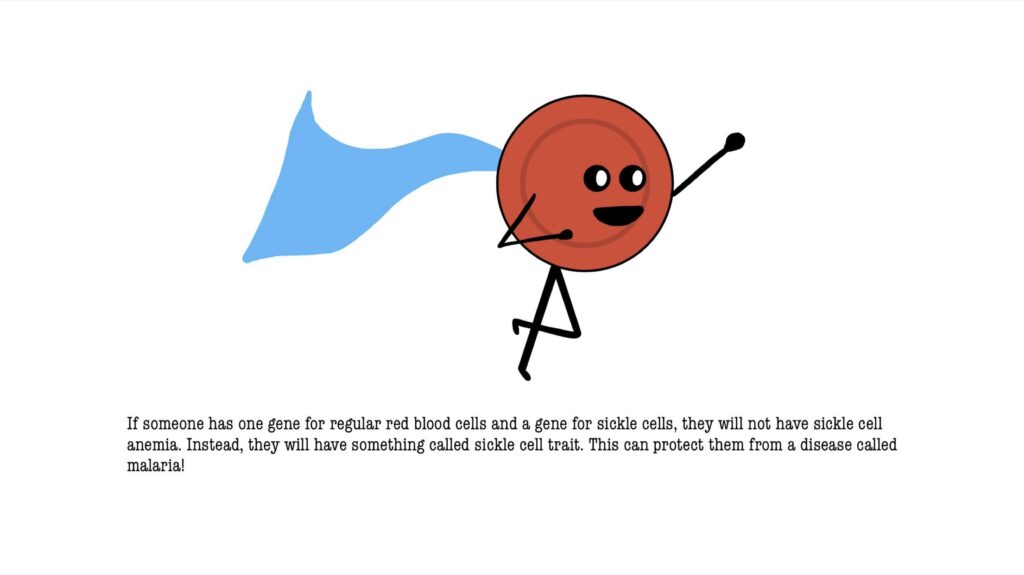


Also view using the download option above ^
The course objective I’ve chosen to cover for my STEAM project is on the cardiovascular system, specifically sickle cell anemia. Sickle cell anemia is a genetic disease that causes abnormal red blood cell shape due to the presence of hemoglobin S. My STEAM project outlines concepts on sickle cell anemia through a children’s book that I wrote and illustrated. The purpose of this book is to share the characteristics of a sickle cell in comparison to a regular red blood cell in a way that a child could understand. My process for creating my project was writing an outline for the script, coming up with pictures that would match the storyline, drawing my pictures, and then writing out my story using the app Notability on my iPad. Finally, I uploaded each page/image into a PowerPoint slide to put it altogether for viewing.
Sickle cell anemia is a severe type of sickle cell disease. Sickle cell anemia is a genetically-linked disease caused by abnormal hemoglobin in red blood cells, also known as hemoglobin S. Hemoglobin is an important protein that carries oxygen in the blood, which is essential for gas exchange. This type of abnormal hemoglobin causes red blood cells to form a sickled shape, leading the sickled cells to have several internal consequences such as vascular occlusion, organ damage, increased susceptibility to infections, and severe pain (Piccin et al., 2019). Sickle cells are also associated with an earlier cell death resulting in shortages of red blood cells in comparison to red blood cells with genes for normal hemoglobin (CDC, 2022).
While sickle cell anemia can be found in patients all around the world, the disease actually originates from Africa and has significant evolutionary history. The genetic mutation of hemoglobin was found to originate during a single event in Africa (Esoh & Wonkam, 2021). Though this particular gene originated from one place, its evolution has shown how the hemoglobin gene is diverse and can lead to different outcomes of sickle cell anemia. It also supports the significance of sickle-cell trait in areas where malaria is high, as sickle cell trait has the ability to resist this disease (Esoh & Wonkam, 2021). Sickle cell trait occurs when an individual has one gene for sickle cell and one normal gene. Individuals with sickle cell trait won’t typically have symptoms of sickle cell anemia except in rare cases (CDC, 2022).
Diagnostic testing for chromosomal or genetic abnormalities can occur before birth and during newborn screening to check for a sickle cell mutation (CDC, 2022). The inherited sickle cell mutation is caused by a point mutation in the hemoglobin gene. More specifically, the mutation is a substitution of a single nucleotide. The substitution switches an A nucleotide to a T nucleotide, resulting in a change from a glutamic acid codon (GAG) to a valine codon (GTG) (Piccin et al., 2019).
If diagnosed with sickle cell anemia, there are various treatment options for people living with this disease. Hydroxyurea is a US-FDA approved therapy used to treat sickle cell anemia. This therapy treatment reduces sickle hemoglobin and increases the production of foetal haemoglobin. This increases the hemoglobin’s affinity for oxygen and reestablishes nitric oxide levels, preventing vascular occlusion episodes from occurring (Piccin et al., 2019). There are also other therapies and lifestyle changes that can help prevent and treat sickle cell anemia. A few lifestyle behaviors that can help patients with sickle cell anemia include drinking lots of water, maintaining a regular temperature, avoiding exposure to major changes in altitude, washing hands often, good hygiene, and avoiding exposure to low oxygen levels (CDC, 2022). Medical screening and vaccines (especially in children) are also beneficial in protecting patients with sickle cell anemia because they can help prevent infections (CDC, 2022).
References
Esoh, K., & Wonkam, A. (2021). Evolutionary history of sickle-cell mutation: implications for global genetic medicine. Human Molecular Genetics Online/Human Molecular Genetics, 30(R1), R119–R128. https://doi.org/10.1093/hmg/ddab004
Piccin, A., Murphy, C., Eakins, E., Rondinelli, M. B., Daves, M., Vecchiato, C., Wolf, D., Mahon, C. M., & Smith, O. (2019). Insight into the complex pathophysiology of sickle cell anaemia and possible treatment. European Journal of Haematology, 102(4), 319–330. https://doi.org/10.1111/ejh.13212
CDC. (2022, August 18). What is sickle cell disease? Centers for Disease Control and Prevention. https://www.cdc.gov/ncbddd/sicklecell/facts.html
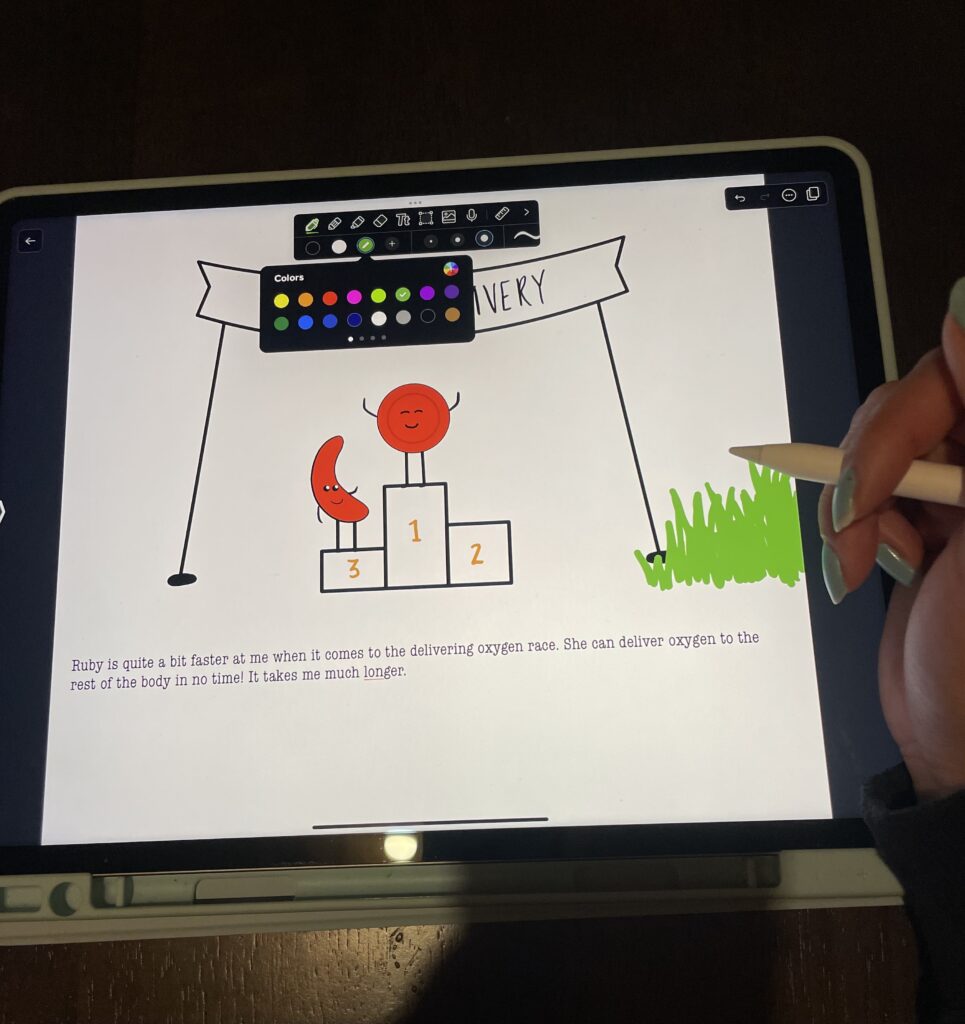

Gianna’s objective is to cover the cardiovascular system, focusing on sickle cell anemia. For her art piece, she created a children’s book to share the differences between the characteristics of a sickle cell and a regular red blood cell. Her book is about Suzy, the Sickle Cell, and Ruby, the Red Blood Cell. Her purpose of the book is to describe their differences in terms children can understand. Sickle cell anemia is a severe genetic sickle cell disease that alters red blood cell shape due to abnormal hemoglobin S. This disease causes red blood cells to become sickle-shaped, leading to vascular blockages, organ damage, infections, and severe pain. Originating in Africa, this genetic mutation can resist malaria. Diagnostic tests can identify the sickle cell trait early on. Treatments like hydroxyurea can manage symptoms by increasing fetal hemoglobin levels. Lifestyle adjustments like drinking lots of water, maintaining regular temperature, avoiding significant changes in altitude and low oxygen levels, maintaining good hygiene, and using medical screening and vaccines can manage sickle cell anemia and prevent complications.